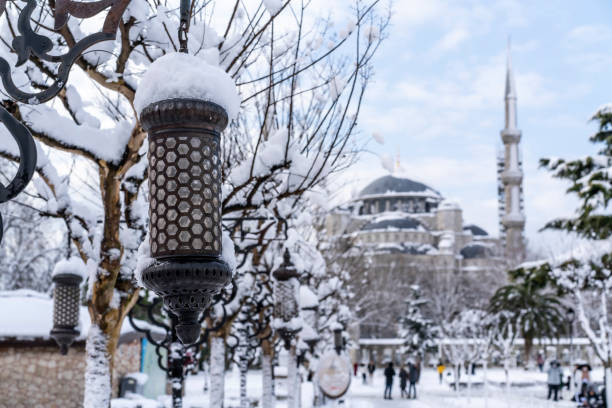Turkey is a land of contrasts—where ancient history collides with vibrant modernity, and sun-drenched beaches give way to snow-capped mountains. But with such diverse landscapes and climates, choosing the best time to visit Turkey can feel overwhelming. Should you chase summer sun on the Turquoise Coast? Brave winter winds for crowd-free ruins? Or time your trip for spring blooms and autumn harvests?
In this guide, we’ll break down Turkey’s seasons, weather patterns, and crowd levels to help you plan the perfect trip—whether you’re a history buff, beach lover, or adventure seeker.
Spring in Turkey (March–May)

Weather: Mild temperatures (10°C–25°C / 50°F–77°F), blooming wildflowers, and occasional rain showers.
Crowds: Moderate (except during Easter and Ramadan holidays).
Why Visit:
Istanbul’s Tulip Festival (April): Millions of tulips burst into color across parks and historic sites.
Cappadocia’s Green Valleys: Hike among fairy chimneys without summer’s scorching heat.
Ephesus & Pamukkale: Explore ancient ruins comfortably before peak tourist season.
Tip: Pack layers for chilly mornings and warm afternoons.
Summer in Turkey (June–August)

Weather: Hot and dry (25°C–40°C / 77°F–104°F), especially in coastal regions like Antalya and Bodrum.
Crowds: Peak season—expect busy beaches, higher prices, and booked-up hotels.
Why Visit:
Turquoise Coast Beaches: Swim, sail, or dive in crystal-clear waters at Ölüdeniz or Patara.
Cappadocia Balloon Festivals: Longer daylight hours mean more chances for sunrise balloon rides.
Black Sea Cool-Down: Escape the heat in Trabzon’s misty mountains and Uzungöl Lake.
Tip: Book accommodations and flights 3–6 months in advance.
Autumn in Turkey (September–November)

Weather: Golden, mild days (15°C–28°C / 59°F–82°F) with cooler evenings. Ideal for outdoor adventures.
Crowds: Thinning after September—great for solo travelers and photographers.
Why Visit:
Harvest Feasts: Taste fresh figs, olives, and grapes in the Aegean vineyards.
Hiking the Lycian Way: Tackle Turkey’s iconic trail without summer’s swelter.
Istanbul Biennial (September–November): Dive into contemporary art in historic venues.
Tip: Coastal towns like Fethiye stay warm into October—perfect for late-season swimming.
Winter in Turkey (December–February)

Weather: Chilly (0°C–15°C / 32°F–59°F), snowy in Anatolia, mild on the Mediterranean coast.
Crowds: Lowest—except during New Year’s and ski season.
Why Visit:
Ski Resorts: Hit the slopes at Uludağ (near Bursa) or Palandöken (Europe’s longest run!).
Istanbul’s Winter Magic: Sip salep (creamy orchid drink) by the Bosphorus, and explore Hagia Sophia without the crowds.
Budget-Friendly Travel: Hotels and tours drop prices by up to 50%.
Tip: Cappadocia’s snow-dusted valleys make for surreal winter photo ops (but balloon flights depend on weather).
Month-by-Month Cheat Sheet
| Month | Highlights | Best For |
|---|---|---|
| April | Tulip Festival, mild hikes | Culture & nature |
| July | Beach parties, sailing | Sun-seekers |
| October | Harvests, hiking | Foodies & adventurers |
| January | Skiing, Istanbul serenity | Budget travelers |
Final Tips for Choosing Your Perfect Time
Avoid Ramadan (dates vary): Some restaurants close during daylight hours in conservative areas.
Shoulder Seasons Rule: April–May and September–October balance good weather and manageable crowds.
Regional Variations: Coastal Antalya (hot summers) vs. Eastern Anatolia (snowy winters)—pack accordingly!
Conclusion:
Whether you’re chasing summer sun on the Aegean, photographing Cappadocia’s autumn hues, or sipping tea in a snowy Istanbul café, Turkey’s magic transcends seasons. For most travelers, spring and autumn strike the perfect balance—but don’t overlook winter’s charm or summer’s vibrant energy.
Ready to plan? Pin this guide, share it with fellow wanderers, or drop a comment with your dream season!

